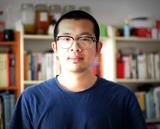您当期的位置:首页 >> 课程详情 >> 三一口语十一级关于艺术的话题
课程介绍
三一口语十一级关于艺术的话题
What Is Art ?
ART has not always been what we think it is today. An object regarded as Art today may not have been perceived as such when it was first made, nor was the person who made it necessarily regarded as an artist. Both the notion of "art" and the idea of the "artist" are relatively modern terms.
Many of the objects we identify as art today -- Greek painted pottery, medieval manuscript illuminations, and so on -- were made in times and places when people had no concept of "art" as we understand the term. These objects may have been appreciated in various ways and often admired, but not as "art" in the current sense.
ART lacks a satisfactory definition. It is easier to describe it as the way something is done -- "the use of skill and imagination in the creation of aesthetic objects, environments, or experiences that can be shared with others" (Britannica Online) -- rather than what it is.
The idea of an object being a "work of art" emerges, together with the concept of the Artist, in the 15th and 16th centuries in Italy.
During the Renaissance, the word Art emerges as a collective term encompassing Painting, Sculpture, and Architecture, a grouping given currency by the Italian artist and biographer Giorgio Vasari in the 16th century. Subsequently, this grouping was expanded to include Music and Poetry which became known in the 18th century as the 'Fine Arts'. These five Arts have formed an irreducible nucleus from which have been generally excluded the 'decorative arts' and 'crafts', such as as pottery, weaving, metalworking, and furniture making, all of which have utility as an end. But how did Art become distinguished from the decorative arts and crafts? How and why is an artist different from a craftsperson? In the Ancient World and Middle Ages the word we would translate as 'art' today was applied to any activity governed by rules. Painting and sculpture were included among a number of human activities, such as shoemaking and weaving, which today we would call crafts.
Read more on Art & Artists in the Ancient World and Middle Ages...
During the Renaissance, there emerged a more exalted perception of art, and a concomitant rise in the social status of the artist. The painter and the sculptor were now seen to be subject to inspiration and their activities equated with those of the poet and the musician.
Read more on Art & Artists in the Renaissance....
In the latter half of the 16th century the first academies of art were founded, first in Italy, then in France, and later elsewhere. Academies took on the task of educating the artist through a course of instruction that included such subjects as geometry and anatomy. Out of the academies emerged the term "Fine Arts" which held to a very narrow definition of what constituted art.
Read more on Art & Artists in the Academies...
The institutionalizing of art in the academies eventually provoked a reaction to its strictures and definitions in the 19th century at which time new claims were made about the nature of painting and sculpture. By the middle of the century, "modernist" approaches were introduced which adopted new subject matter and new painterly values. In large measure, the modern artists rejected, or contradicted, the standards and principles of the academies and the Renaissance tradition. By the end of the 19th century and the beginning of the 20th, artists began to formulate the notion of truth to one's materials, recognizing that paint is pigment and the canvas a two-dimensional surface. At this time the call also went up for "Art for Art's Sake."
Read more on Art & Artists and Modernism...
In the early 20th century all traditional notions of the identity of the artist and of art were thrown into disarray by Marcel Duchamp and his Dada associates. In ironic mockery of the Renaissance tradition which had placed the artist in an exalted authoritative position, Duchamp, as an artist, declared that anything the artist produces is art. For the duration of the 20th century, this position has complicated and undermined how art is perceived but at the same time it has fostered a broader, more inclusive assessment of art.
Read more on Art & Artists Today...







